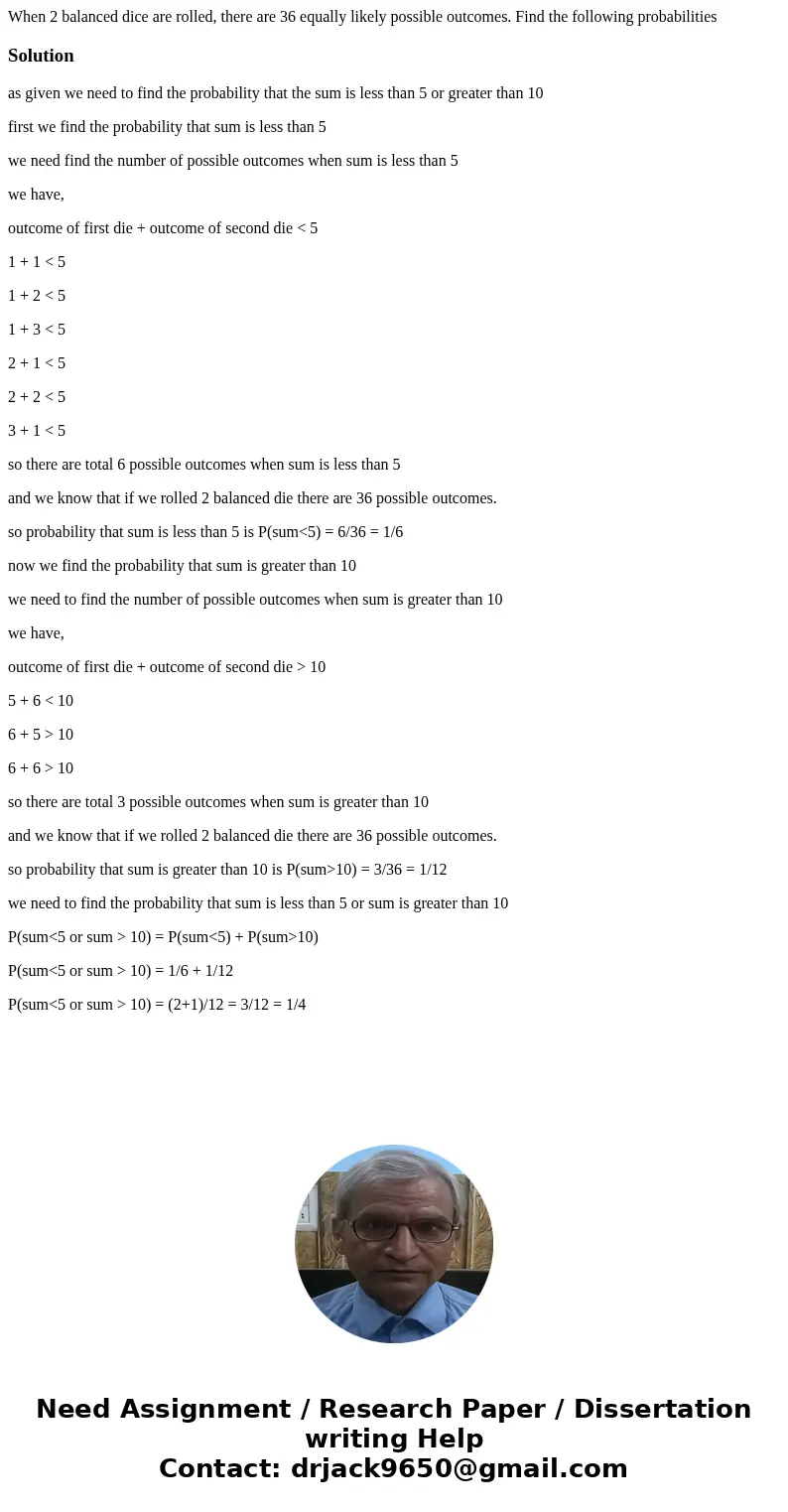When 2 balanced dice are rolled there are 36 equally likely
Solution
as given we need to find the probability that the sum is less than 5 or greater than 10
first we find the probability that sum is less than 5
we need find the number of possible outcomes when sum is less than 5
we have,
outcome of first die + outcome of second die < 5
1 + 1 < 5
1 + 2 < 5
1 + 3 < 5
2 + 1 < 5
2 + 2 < 5
3 + 1 < 5
so there are total 6 possible outcomes when sum is less than 5
and we know that if we rolled 2 balanced die there are 36 possible outcomes.
so probability that sum is less than 5 is P(sum<5) = 6/36 = 1/6
now we find the probability that sum is greater than 10
we need to find the number of possible outcomes when sum is greater than 10
we have,
outcome of first die + outcome of second die > 10
5 + 6 < 10
6 + 5 > 10
6 + 6 > 10
so there are total 3 possible outcomes when sum is greater than 10
and we know that if we rolled 2 balanced die there are 36 possible outcomes.
so probability that sum is greater than 10 is P(sum>10) = 3/36 = 1/12
we need to find the probability that sum is less than 5 or sum is greater than 10
P(sum<5 or sum > 10) = P(sum<5) + P(sum>10)
P(sum<5 or sum > 10) = 1/6 + 1/12
P(sum<5 or sum > 10) = (2+1)/12 = 3/12 = 1/4

 Homework Sourse
Homework Sourse